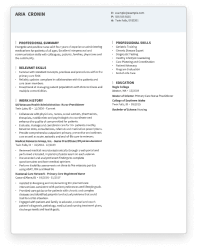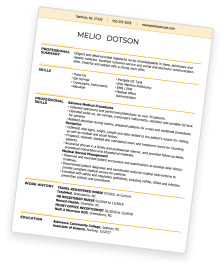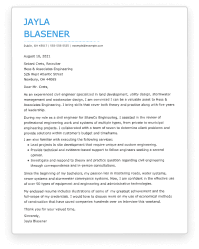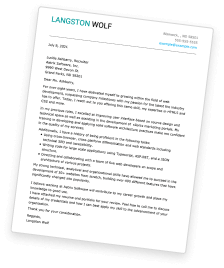Bartender Resumes: Overview
Bartenders play a pivotal role in hospitality, not only as servers of drinks but also as entertainers who provide memorable customer service experiences.
Bartenders can be found in an array of environments, including:
- Restaurants
- Night Clubs
- Private Events
- Hotels and Resorts
- Breweries
In this dynamic role, the most important skills and qualifications include a knack for mixology, exceptional customer service, and the ability to stay cool under pressure.
Our bartender resume examples will guide you in building the best possible resume that showcases your skills and experiences effectively. For more options, check out our entire collection of professional resume examples and downloadable templates to take your bartending career to the next level!
Bartender Resume Example
With this excellent resume example, thanks to its engaging design and format choices, you can highlight your best qualifications as you look for your next bartending job.
-
Colorful Header:
The contact header adds a stripe of color to help make this bartender resume example stand out without diminishing the professional format below.
-
Quantifiable Achievements:
This bartender resume sample does a great job providing measurable data to the candidate's achievements in the work history section, which demonstrates value to potential employers.
-
Organized Layout:
Every section is clearly labeled and placed in a logical order of a combination resume format, which makes it easy to find the most relevant qualifications.
-
Relevant Certifications:
This bartender resume example provides a separate section for certifications in the "Licensee Education on Alcohol and Drugs (LEAD) Program" and "Serving Alcohol Program", which further enhances the candidate's credentials.
Bartender Resume Sample
Here we have another wonderful resume sample for bartenders that underscores skills and experience that could be used for any bartender job description.
-
Creative and Clean:
This bartender resume combines the creative use of geometric shapes and color with a traditional resume format so that the candidate's name jumps off the page along with an exceptional list of qualifications.
-
Impressive Experience:
With powerful statements such as "decreased waste by 80% through creating and following strict recipes and measurements for drinks" it is clear this bartender has proven their ability to make a positive impact.
-
Effective Use of Whitespace:
The use of whitespace, particularly on the left hand side of the resume, keeps most of the information tightly organized without making it look cluttered. This allows the reader to easily figure out what the candidate has to offer to the bartending position.
-
Use of Keywords:
Throughout this bartender resume example you can find keywords in phrases like "compliance for inspections" and "handling difficult customers", which help showcase the candidate's relevancy to the position for readers and applicant tracking systems (ATS).
How to Write a Bartender Resume: A Step-by-Step Guide
Writing an effective resume is a key component to getting a job as a bartender. Use this guide to help you showcase your best bartending qualifications on your resume.
-
Choose a Format:
When building your bartender resume, you've got a range of options at your disposal. Explore the various resume formats available and choose the one that aligns best with your requirements. The chronological resume format stands as the most prevalent choice, with its primary focus on your work history.
On the other hand, the functional resume format provides an alternative strategy. Although it's less common and may not be as ATS-friendly, it can be an excellent option, especially for those with limited experience. Recent high school graduates, for instance, can capitalize on its emphasis on transferable skills. Lastly, there's the combination resume format, incorporating elements from both the chronological and functional approaches.
-
Contact Information:
Your resume should start with your contact information, including your full name, phone number, email address, location (city and state), and optionally, your LinkedIn profile. Ensure this section is accurate and up-to-date so employers can easily contact you.
-
Summary or Objective:
At the top of your resume, craft a three- to four-sentence professional summary or objective statement that gives potential employers a clear sense of your bartending qualifications and intentions. If you have relevant work experience, write a resume summary and focus it on your key qualifications, skills, and accomplishments that are specifically relevant to the bartender position.
Alternatively, opt for an objective statement if you recently graduated or are shifting your career focus. Here, briefly describe your professional goals and draw parallels between your aspirations and the open position.
-
Work History:
In the work history section, emphasize your bartender experience and relevant transferable skills. Describe your roles, responsibilities, and accomplishments in previous positions, showcasing your expertise in mixing drinks, providing exceptional customer service, and managing inventory. Use quantifiable achievements to demonstrate your value.
-
Skills:
List your bartender skills, focusing on key competencies such as mixology, customer service, multitasking, and knowledge of beverage recipes. Ensure that these skills align with the specific job requirements you're applying for.
-
Education:
Include your educational background, highlighting any relevant certifications, courses, or training related to bartending. Mention your degree or any specialized certifications you hold, such as a bartender's license.
-
Additional Sections (optional):
Consider adding extra sections that enhance your resume's appeal. These can include volunteer work, awards, publications, or languages spoken, depending on their relevance to the specific job.
Key Skills For Bartender Resumes
Possessing the right skills on your bartender resume, including both hard skills and soft skills, is crucial to success. Here are some of the most popular to consider:
Top 5 Hard Skills for Bartender Resumes
- Mixology: Mastering the art of mixing drinks and knowing a wide range of cocktails is a fundamental skill for any bartender.
- Inventory Management: Efficiently managing inventory ensures that you have the necessary ingredients and supplies to serve customers.
- Point of Sale (POS) Systems: An important technical skill, proficiency in POS systems is essential for accurately tracking orders and handling payments.
- Product Knowledge: Bartenders should have in-depth knowledge of various alcoholic and non-alcoholic beverages, including wine, spirits, and beer.
- Health and Safety: Knowledge of specific health and safety regulations is important to upholding your establishment’s license with the local health inspector.
Top 5 Soft Skills for Bartender Resumes
- Communication: Effective communication is essential for taking orders, understanding customer preferences, and working harmoniously with colleagues.
- Multitasking: Bartending can be fast-paced, especially during busy hours. The ability to handle multiple tasks simultaneously, from taking orders to preparing drinks, is a valuable soft skill.
- Adaptability: The bar environment can change quickly, and bartenders must adapt to different customer needs, events, and circumstances.
- Problem-Solving: Being a problem solver is important in resolving customer issues, handling unexpected situations, and ensuring the bar runs smoothly.
- Teamwork: Bartenders often work as part of a team with servers, kitchen staff, and other colleagues. Being a team player is crucial for maintaining a cohesive and efficient operation.
With these skills for your resume, you can be sure to impress any employer. However, it’s important to tailor your resume to the job in question, so highlight the most relevant skills.
Key Certifications For Bartender Resumes
Certifications can be a powerful addition to your bartender resume, demonstrating your commitment to professionalism and your ability to meet industry standards. Here are some of the most popular certifications that can make your resume stand out:
Top 5 Certifications for Bartender Resumes
- TIPS (Training for Intervention ProcedureS): TIPS certification is highly regarded in the industry as it focuses on responsible alcohol service and helps bartenders identify and address potentially problematic situations.
- ServSafe Alcohol: This certification covers the safe handling of alcohol, which is crucial for complying with health and safety regulations and ensuring the well-being of patrons.
- BAR Ready: The BAR (Beverage Alcohol Resource) Ready program is known for its in-depth mixology and cocktail preparation training, making it an excellent choice for those looking to elevate their skills.
- Bartender License: Depending on your location, you may need a bartender license to legally serve alcohol. Including this on your resume demonstrates your compliance with local regulations.
- Cicerone Certification (for beer experts): If you specialize in beer, consider the Cicerone Certification, which focuses on knowledge of different beer styles, brewing, and service. It’s a valuable credential for bartenders in establishments with a strong beer selection.
These certifications enhance your skillset and reassure employers that you’re well-prepared for the role’s responsibilities and can give you a competitive edge when applying for bartending jobs.
Helping Job Seekers Like You
9 Tips For Writing a Bartender Resume
- Tailor Your Resume: Customize your resume for the specific bartender position you’re applying for. Highlight relevant skills and experiences that match the job description.
- Start with a Strong Summary: Craft a compelling resume summary that succinctly describes your expertise, passion for bartending, and unique qualities that set you apart.
- Highlight Mixology Skills: Emphasize your mixology skills and knowledge of various drinks, showcasing your ability to create delightful and unique cocktails.
- Quantify Achievements: When detailing your work experience, use quantifiable achievements to demonstrate your impact. For example, mention how you increased bar revenue or improved customer satisfaction.
- Customer Service Showcase: Highlight your outstanding customer service skills. Bartenders often serve as the face of the establishment, and excellent customer interactions are crucial.
- Adaptability Matters: Stress your ability to adapt to different environments and handle high-pressure situations. Show that you can excel in a busy, fast-paced bar.
- Keywords for ATS: Incorporate industry-specific keywords from the job posting to enhance your resume’s visibility in applicant tracking systems (ATS).
- Showcase Certifications: If you have relevant certifications like TIPS or ServSafe Alcohol, make them prominent in your resume to demonstrate your commitment to safety and professionalism.
- Relevant Education: Mention your bartending-related education, such as mixology courses or bartender training. These credentials can boost your qualifications.


Save Time With Hloom's Resume Builder
Key Takeaways
Tailoring your bartender resume to the specific job you're applying for is crucial.
Emphasize your mixology skills and ability to create a wide range of cocktails.
Certifications like TIPS and ServSafe Alcohol enhance your resume, showcasing your commitment to professionalism and safety in the bar industry.
Use quantifiable achievements in your work history to demonstrate the impact you've made in previous roles.
Showcase your ability to provide exceptional service, handle customer inquiries, and create a positive atmosphere in the establishment.
Save Time With Hloom's Cover Letter Builder








